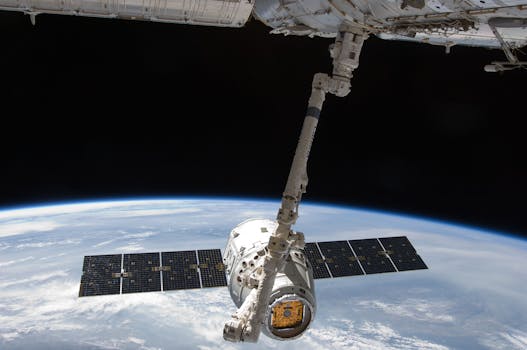High-Tech Horizons: The Evolution of Earth-Orbiting Technologies for Observation

High-Tech Horizons: The Evolution of Earth-Orbiting Technologies for Observation
High-Tech Horizons: The Evolution of Earth-Orbiting Technologies for Observation has been a remarkable journey, marked by significant advancements and breakthroughs. The ability to observe Earth from space has vastly improved our understanding of the planet, its climate, and the universe as a whole. This technology has numerous applications, ranging from environmental monitoring and weather forecasting to communication and navigation.
The first Earth-orbiting satellite, Sputnik 1, was launched in 1957 by the Soviet Union. This historic event marked the beginning of the space age and paved the way for future space exploration. Since then, numerous satellites have been launched, each with its unique mission and objectives. The development of Earth-observing satellites has enabled us to monitor the planet’s surface, atmosphere, and oceans, providing invaluable insights into the Earth’s systems and processes.
Early Years of Earth-Orbiting Technologies
The early years of Earth-orbiting technologies were characterized by experimentation and innovation. The first commercial communications satellite, Intelsat 1, was launched in 1965, facilitating global communication. The launch of the first weather satellite, TIROS-1, in 1960 enabled meteorologists to monitor weather patterns and predict storms. These early satellites laid the foundation for the development of more advanced Earth-observing technologies.
The 1970s saw the introduction of the first Earth Resources Technology Satellite (ERTS-1), later renamed Landsat 1. This satellite was designed to study the Earth’s natural resources, including land use, vegetation, and water resources. The Landsat program has since become a cornerstone of Earth observation, providing valuable data for environmental monitoring, land use planning, and climate change research.
Advances in Earth-Orbiting Technologies
In recent years, significant advances have been made in Earth-orbiting technologies, driven by improvements in sensor technology, data processing, and satellite design. The launch of the Terra satellite in 1999 marked a major milestone, with its advanced sensors and instruments enabling the collection of high-resolution data on the Earth’s surface and atmosphere. The Aqua satellite, launched in 2002, focused on water cycle research, while the Aura satellite, launched in 2004, studied the Earth’s atmosphere and climate.
The development of constellations of small satellites, such as the Planet Labs’ Dove satellites, has revolutionized the field of Earth observation. These small satellites, often launched in large numbers, provide high-frequency imaging of the Earth’s surface, enabling the monitoring of changes in the environment, agriculture, and urban development.
Applications of Earth-Orbiting Technologies
The applications of Earth-orbiting technologies are diverse and widespread. Environmental monitoring is a key area, with satellites providing data on deforestation, ocean health, and climate change. Weather forecasting has become more accurate, with satellites enabling the prediction of severe weather events and storms. Communication and navigation are also critical applications, with satellites facilitating global communication and providing location-based services.
Satellite data is also used in various fields, including agriculture, urban planning, and disaster response. The ability to monitor crop health, soil moisture, and weather patterns has improved agricultural productivity and reduced the risk of crop failure. Satellite imagery is used in urban planning to monitor urban growth, development, and infrastructure management.
Conclusion
In conclusion, High-Tech Horizons: The Evolution of Earth-Orbiting Technologies for Observation has been a remarkable journey, marked by significant advancements and breakthroughs. The ability to observe Earth from space has vastly improved our understanding of the planet, its climate, and the universe as a whole. As technology continues to evolve, we can expect even more innovative applications of Earth-orbiting technologies, ultimately shaping our knowledge and capabilities.
